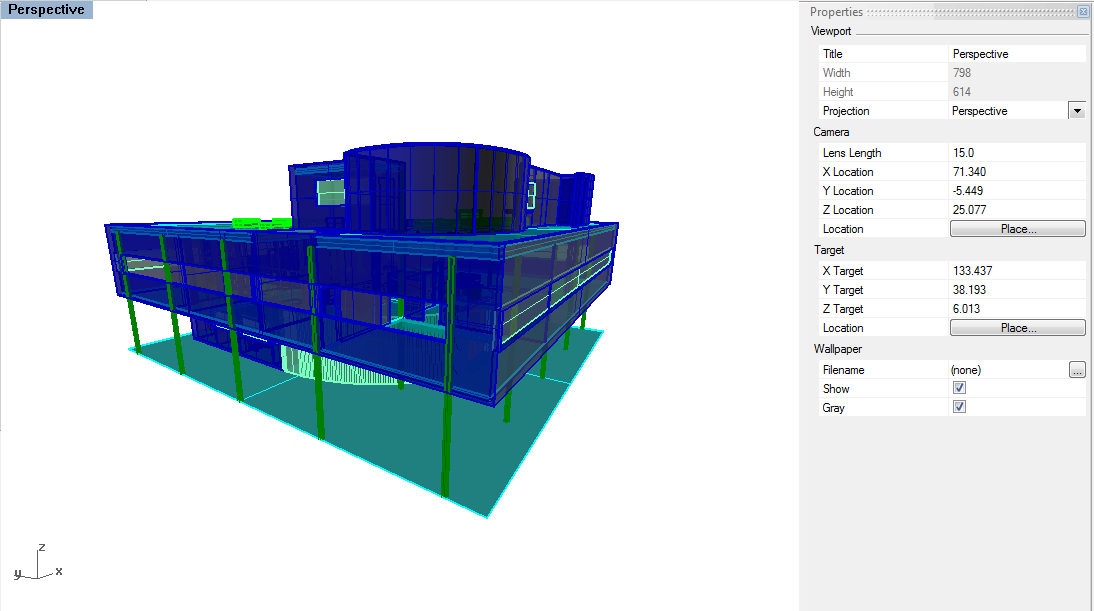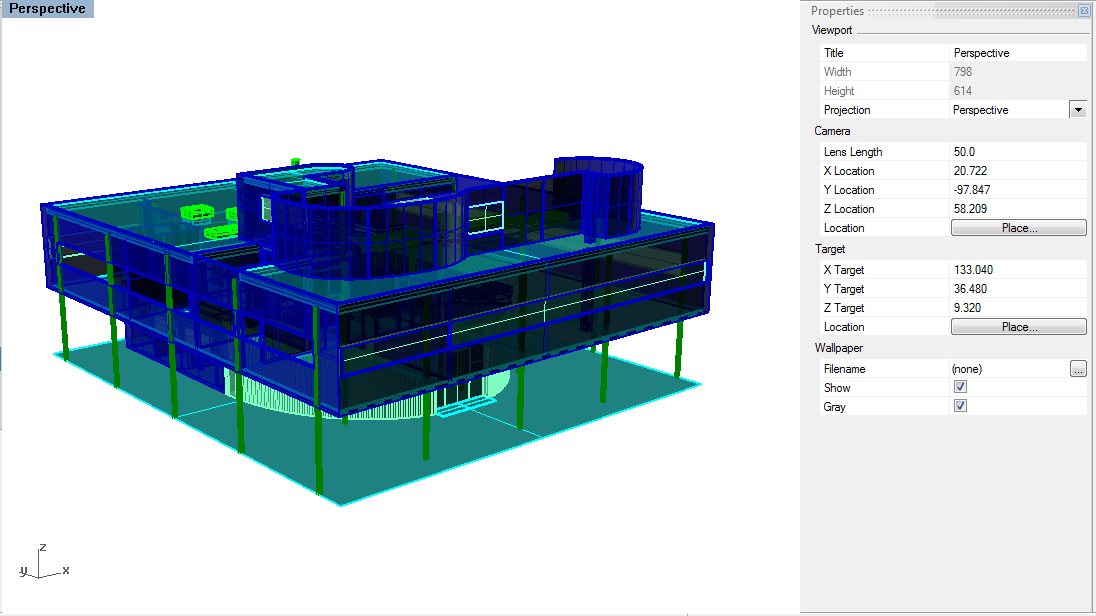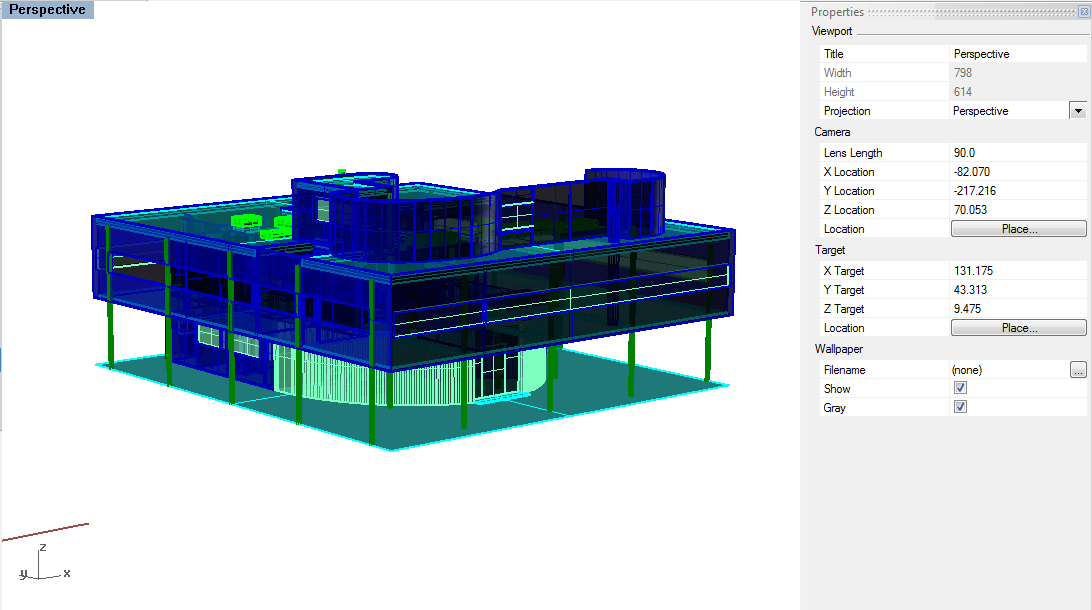|
VRay
misc |
|
|---|---|
| Rendering software to render from Rhino and other CAD packages. Difficult to render while using other applications, but very easy to use. | |
| Manufacturer | Chaos Group |
| Screenshot |

|
| Entities |
Here we will list all the Entities.
Sun and Sky , Alpha Channels , Global Illumination , Lights , Shadows , Materials & Layers
|
| Interfaces |
Here we will list all the Interfaces.
Material Editor , Physical Camera , Toolbar
|
| Methods |
Here we will list all the Methods.
Rendering with HDRI plus sunlight , Rendering with Interior Lights , Rendering with Sunlight , Rendering HDRI Interiors , Transparency Mapping , Displacement Maps , Rendering Sketchy , Rendering Self-Illuminated Materials (Emissive Textures)
|
Introduction
VRay is a photorealistic render engine plug-in for a variety of 3d modeling programs, including Rhino. While it is an extremely powerful rendering engine with globla illumination, irradiance maps, and raytracing, it's also a complicated one. There are many different variable settings that can change how your rendering comes out and it will take many rounds of trial and error to get exactly what you want out of the renderer. This may be time-prohibitive, especially when you are just beginning to use VRay. Our goal is to use the software as a set-up of lighting, shadow, and perspective, then take the result into Photoshop or another photo editing program to get finer details.
For inspiration of what else you can do with 3d modeling, take a look at The Third & The Seventh .
Interface
The toolbar for VRay consists of the following buttons (listed from left to right):
- Material Editor
- Create, edit, and assign materials to objects.
- VRay Options
- Edit VRay settings and load preset settings. Options shown here include settings for Camera, Output (image), Environment, Displacement, and Indirect or Global Illumination.
- VRay Frame Buffer
- Open rendering window.
- Add Sunlighting System
- Create a system based on physically based daylight, or set it to a specific location and time.
- Add Infinite Plane
- Creates an infinite plane along the XY plane at the Z zero location, creating a horizon.
- About VRay
- Information about VRay
Materials & Layers
Materials are assigned in VRay according to individual pieces of geometry.
Open the Material Editor in V-Ray. Right click on Scene Materials and select "AddVrayMtl."
Cameras
Saving Views
- Saved Views
- In Rhino, you can save views so that you'll be able to come back to them at any point later on, even if you've shifted your view around in any of the viewports. Right click on each viewport title and you'll see a drop down menu; go to Set View and click on Named Views.... Here you'll be able to save your current view in the currently selected viewport and give it a name.
- Orient Camera to Surface
- The OrientCameratoSrf command allows you to set up a surface for the camera to lock on. This can be very helpful when setting up exact views, such as axonometrics.
Controlling Views
- Setting up Views
- Eye level - this should be approximately 5 feet above the ground plane
- Birds Eye - this view if from above, looking down at the overall context of the site and the design.
- Interior view (looking out from library) - similar to the bird-eye view, this view is specific to the Potrero Library project because it's a familiar view. When creating this view, consider how a window or interior scene might frame the final viewpoint
- Lens Length
- The perspective camera in Rhino is set to 50 mm by default, replicated the approximate amount of perspective we see in real life. Look at this value in the Properties menu. As the value increases, the lines of perspective become more parallel. As the value decreases, the lines of perspective increase which could be helpful for an interior view. See examples below.
Basics of Lighting
Lighting plays the most important role in rendering because it affects the color, shadow, reflection, and refraction among objects and materials in the scene. V-Ray comes equipped with Global Illumination , which is the natural lighting in a scene. It can be difficult to produce a specific lighting effect because of the many ways to create lights, as well as to change a light's appearance in a final render.
Be sure to choose a light that's best for the type of lighting needed for the scene. Lights can be created using Rhino commands. Or, use the sun and sky tool that is built into V-Ray to position a directional light.
There are two main ways to change lighting options. The first way uses the Properties panel in Rhino to change the properties of a selected light. This is helpful for controlling specific light objects. The second way uses Light Options in V-Ray, which controls the ambient light in the scene--that is, the lighting for the entire scene, not just one specific light.
Settings for all lights are controlled in V-Ray Options.
Environment
- GI (Skylight)
- This controls the Global Illumination . A V-Ray Sky can be added for illumination.
- Background
- This controls the color of the background in the render. It can be changed to an image by clicking on the m next to the color selection.
Typically, exterior renderings can quickly be made by using the default GI. However, to light a scene specific to a time and day, the sun and sky can be set. Interior renderings require a different set of lights. There are several different types of lights in Rhino , but only a few are especially helpful for rendering interior scenes .
Light Types
This is a quick overview of the different lights Rhino offers, but for a more in depth look at lights look at Types of Lights in Rhino , and learn how to better light interior scenes . No matter your level of comfort with lighting in Rhino, it's always a good idea to test render your scenes or render portions of scenes before finalizing your lighting setup.
- Directional Light
- For directional light, the direction of the arrow is the direction from which the light will shine. While spotlight intensity and range can be edited, directional light is different because it emits uniform parallel rays in a specified direction, simulating sunlight. The exact location of the light object does not matter as the light object only indicates the direction of the light.
- Linear Light
- A linear light object emits light similar to a fluorescent tube light.
- Rectangular Light
- A rectangular light object emits light in one direction. Unlike the Spotlight, with Rectangular Light the angle of the light cannot be changed. The size of the light object affects its lighting range. If a larger range with the same light intensity is needed, then the intensity of the light will need to increase. A larger rectangular light will spread the light out over a larger area, so the shadows will become more diffuse.
- Point Light
- A point light emits light from a single location in all directions, also known as omni light. It is useful for interior scenes that require artificial lighting (such as from a light bulb). Especially important when working with point lights is paying attention to the light's intensity and decay settings.
- Spotlight
- The spotlight will appear in the model as a cone shape. The direction of the cone will be the direction of the spotlight. Spotlights with a narrower cone will produce a more concentrated light than spotlights with wider cones. The width of the spotlight does not determine the range of light (how far the light will reach), but the length and width together control the shape of what is illuminated by the spotlight.
Resources
- VRay for Rhino Manual
- The official manual.


